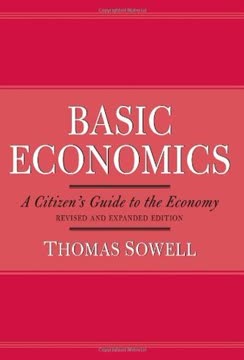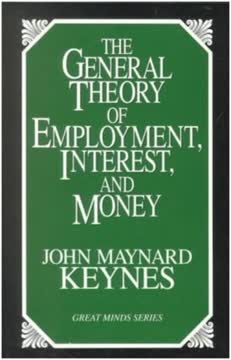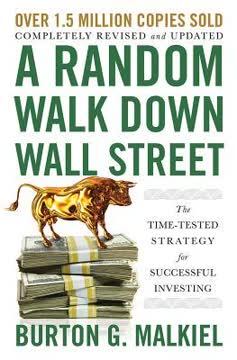Key Takeaways
1. Markets are powerful but imperfect tools for allocating resources
The market economy is like evolution; it is an extraordinarily powerful force that derives its strength from rewarding the swift, the strong, and the smart.
Markets allocate resources efficiently. They channel goods and services to where they are most valued, driving innovation and economic growth. Through the price mechanism, markets coordinate the actions of millions of individuals and firms, each pursuing their own self-interest, to produce outcomes that often benefit society as a whole.
However, markets have limitations. They can fail to account for externalities like pollution, underinvest in public goods like basic research, and sometimes produce outcomes that society deems unfair. Market failures can lead to inefficient or harmful outcomes, such as:
- Monopolies that restrict output and raise prices
- Underproduction of goods with positive externalities (e.g. education)
- Overproduction of goods with negative externalities (e.g. pollution)
- Information asymmetries that distort decision-making
The challenge for policymakers is to harness the power of markets while addressing their shortcomings. This often involves carefully designed regulations, taxes, or subsidies to align private incentives with social welfare.
2. Incentives drive human behavior and shape economic outcomes
Economics is about incentives: Everything else is commentary.
Incentives are the cornerstone of economic behavior. People respond to incentives by weighing costs and benefits to make decisions that they believe will make themselves better off. This applies not just to financial incentives, but also to social, moral, and personal motivations.
Understanding incentives is crucial for effective policy. Well-designed policies align individual incentives with societal goals. Poorly designed ones can backfire by creating perverse incentives. Examples include:
- Tax policies that discourage work or investment
- Subsidies that encourage wasteful behavior
- Regulations that create opportunities for corruption
Incentives explain many economic phenomena. From why people choose certain careers to why companies innovate, incentives shape outcomes across the economy. Even altruistic behavior can often be understood through the lens of incentives, as people derive personal satisfaction from helping others.
3. Government plays a crucial role in creating the conditions for markets to function
Good government makes a market economy possible. Period.
Effective institutions are essential. Governments provide the legal and regulatory framework that allows markets to function. This includes:
- Defining and enforcing property rights
- Establishing contract law and dispute resolution mechanisms
- Maintaining a stable currency
- Providing public goods like infrastructure and education
Regulation can enhance market efficiency. While excessive regulation can stifle economic activity, appropriate regulation can make markets work better by:
- Addressing externalities (e.g. pollution controls)
- Promoting competition (e.g. antitrust laws)
- Reducing information asymmetries (e.g. disclosure requirements)
The quality of governance impacts economic outcomes. Countries with strong institutions tend to be more prosperous. Poor governance, corruption, and excessive bureaucracy can strangle economic growth and development.
4. Human capital is the foundation of individual and national prosperity
The strikingly simple observation that different individuals have different preferences is sometimes lost on otherwise sophisticated policymakers.
Education and skills drive productivity. Human capital – the knowledge, skills, and abilities that people possess – is the primary determinant of individual earnings and a key driver of economic growth. Investments in education and training can yield high returns for both individuals and society.
Human capital has positive externalities. An educated populace leads to:
- Faster adoption of new technologies
- More innovation and entrepreneurship
- Better-functioning democratic institutions
- Improved public health outcomes
The nature of valuable skills evolves. As economies develop and technology advances, the skills in demand change. This creates challenges for individuals and policymakers in anticipating future needs and adapting education systems.
5. Financial markets facilitate growth but can also create instability
Banks and other financial institutions get weaker as loans go bad and the value of the real estate and other assets used as collateral for those loans falls.
Financial markets play a vital economic role. They:
- Channel savings to productive investments
- Allow individuals and businesses to manage risk
- Provide price signals about the relative value of different assets
However, finance can be destabilizing. Financial markets are prone to:
- Bubbles and crashes driven by herd behavior
- Contagion effects where problems in one area spread rapidly
- Creation of complex instruments that obscure risks
Financial crises can have severe economic consequences. When financial systems fail, the effects ripple through the entire economy, potentially causing:
- Credit crunches that starve businesses of capital
- Collapsing asset prices that destroy wealth
- Widespread unemployment and economic contraction
6. Globalization and trade generate wealth but create winners and losers
Trade is based on voluntary exchange. Individuals do things that make themselves better off.
International trade increases overall prosperity. It allows countries to specialize in what they do best, leading to:
- Lower prices for consumers
- Access to a wider variety of goods
- More efficient use of global resources
- Technology transfer between countries
However, trade creates both winners and losers. While consumers and export-oriented industries benefit, workers in import-competing industries may lose jobs or face wage pressures. This can lead to:
- Structural unemployment in certain sectors
- Increased income inequality within countries
- Political backlash against globalization
Managing globalization's downsides is a key policy challenge. Options include:
- Worker retraining programs
- Trade adjustment assistance
- Gradual phase-in of trade agreements
- International cooperation on labor and environmental standards
7. Macroeconomic policy aims to promote growth and stability
The Federal Reserve has tools with more direct impact on the global economy than any other institution in the world, public or private.
Fiscal and monetary policy are the main macroeconomic tools. Governments use these to influence:
- Overall economic growth
- Inflation rates
- Unemployment levels
- Exchange rates
Policymakers face difficult trade-offs. For example:
- Stimulating growth vs. controlling inflation
- Supporting employment vs. maintaining price stability
- Maintaining a strong currency vs. promoting exports
Economic cycles are complex and hard to manage. Despite advances in economic understanding, predicting and controlling business cycles remains challenging. Policy mistakes can exacerbate economic problems rather than solve them.
8. Development economics seeks to understand why some nations prosper while others stagnate
Economists do not have a recipe for making poor countries rich.
Many factors influence development. Key elements for economic growth include:
- Strong institutions and rule of law
- Investment in human capital
- Open trade policies
- Macroeconomic stability
- Infrastructure development
There is no one-size-fits-all approach. Countries have succeeded with different models, from state-led industrialization to more market-oriented approaches. Context matters enormously in determining what policies will be effective.
Poverty traps can be self-reinforcing. Low levels of education, poor health, weak institutions, and lack of infrastructure can create vicious cycles that are hard to break. External assistance and carefully designed interventions may be necessary to jump-start development in the poorest countries.
Last updated:
FAQ
What's Naked Economics: Undressing the Dismal Science about?
- Accessible Economics: Charles Wheelan's Naked Economics simplifies complex economic concepts, making them understandable for a general audience without heavy jargon or equations.
- Real-World Applications: The book connects economic theories to everyday life, illustrating their relevance in personal finance, public policy, and global trade.
- Critical Perspective: Wheelan challenges traditional economic views, encouraging readers to think critically about market efficiency and the role of government.
Why should I read Naked Economics?
- Engaging and Humorous: Wheelan's writing style is both informative and entertaining, using anecdotes and humor to make economics enjoyable.
- Practical Insights: The book offers insights into how economic principles affect personal and global financial decisions, helping readers understand current events.
- Foundation for Further Study: It provides a solid foundation for those interested in pursuing more advanced studies in economics.
What are the key takeaways of Naked Economics?
- Power of Markets: The book emphasizes the efficiency of markets in resource allocation and wealth creation, highlighting competition and innovation.
- Role of Incentives: Incentives are crucial in shaping behavior and economic outcomes, affecting both individuals and organizations.
- Government's Dual Role: Wheelan discusses how government can either facilitate or hinder economic growth, depending on its policies and regulations.
What are the best quotes from Naked Economics and what do they mean?
- “It’s the economy, stupid!”: Highlights the importance of economic issues in political discourse and public policy.
- “Economics is the art of making the most of life.”: Emphasizes economics as a discipline focused on improving human welfare and quality of life.
- “The market is amoral.”: Reminds readers that markets operate without moral considerations, necessitating regulation to prevent negative social outcomes.
How does Naked Economics explain the concept of externalities?
- Definition of Externalities: Externalities are costs or benefits incurred by third parties not involved in a transaction, such as pollution affecting nearby residents.
- Market Failure: Externalities can lead to market failure, requiring government intervention to correct inefficiencies.
- Examples and Solutions: Wheelan provides examples like pollution from SUVs and suggests taxes or regulations to internalize these external costs.
What is the significance of human capital in Naked Economics?
- Definition of Human Capital: Refers to the skills, knowledge, and experience possessed by individuals, crucial for productivity and earning potential.
- Impact on Income Inequality: Disparities in human capital contribute to income inequality, with higher education leading to higher earnings.
- Economic Growth: Societies investing in education and skills development tend to experience higher economic growth rates.
How does Naked Economics address the role of government in the economy?
- Government as a Facilitator: Wheelan argues that government creates the legal framework necessary for markets to function, such as enforcing contracts.
- Correcting Market Failures: Government can intervene to correct market failures like externalities and public goods, enhancing economic productivity.
- Balancing Act: A balance between government intervention and market freedom is crucial to avoid stifling innovation and growth.
What does Naked Economics say about globalization and trade?
- Benefits of Trade: Globalization and free trade increase efficiency and lower prices, allowing countries to specialize in their strengths.
- Concerns about Inequality: Globalization can create winners and losers, particularly among low-skilled workers, exacerbating income inequality.
- Long-Term Growth: Despite disruptions, globalization contributes to long-term economic growth, requiring adaptation to maintain competitiveness.
What is the efficient markets theory discussed in Naked Economics?
- Asset Prices Reflect Information: The theory posits that stock prices incorporate all available information, making it hard to consistently outperform the market.
- Challenges in Stock Picking: Wheelan compares stock picking to finding the fastest checkout line, as everyone is trying to do the same.
- Index Funds as a Solution: Advocates for index funds as a practical investment strategy, often outperforming actively managed funds over time.
How does Naked Economics explain the concept of productivity?
- Definition of Productivity: Defined as the efficiency with which inputs are converted into outputs, crucial for wealth and living standards.
- Factors Influencing Productivity: Includes technology, human capital, and investment, with countries prioritizing these factors experiencing higher growth.
- Impact on Wages: Productivity growth is linked to wage growth, allowing more productive workers to command higher wages.
How does Naked Economics address the issue of income inequality?
- Causes of Income Inequality: Factors include differences in education, skills, and opportunities, with human capital playing a significant role.
- Economic Growth vs. Equality: Discusses the trade-off between growth and equality, where a growing economy can also lead to wealth disparities.
- Policy Implications: Suggests thoughtful policy interventions, such as investing in education, to address income inequality and create equitable opportunities.
What are the implications of inflation discussed in Naked Economics?
- Erosion of Purchasing Power: Inflation diminishes money's value, affecting consumers' ability to buy goods and services.
- Impact on Savings and Investments: Inflation can undermine savings, making wise investments crucial to preserve wealth.
- Central Bank's Role: Emphasizes responsible monetary policy in controlling inflation and maintaining economic stability.
Review Summary
Naked Economics receives generally positive reviews for making economics accessible and engaging. Readers praise Wheelan's clear explanations, humor, and real-world examples. Some criticize his pro-capitalist stance and oversimplification of complex issues. The book is recommended as an introduction to economics for beginners, though some argue it lacks depth on certain topics. Reviewers appreciate Wheelan's ability to make a traditionally dry subject entertaining and relatable, while still conveying important economic concepts.
Similar Books









Download PDF
Download EPUB
.epub digital book format is ideal for reading ebooks on phones, tablets, and e-readers.





